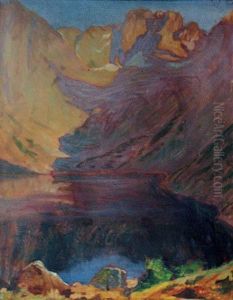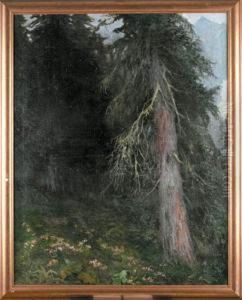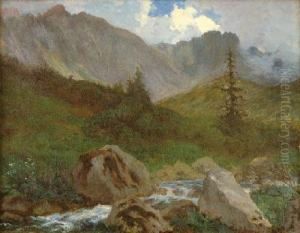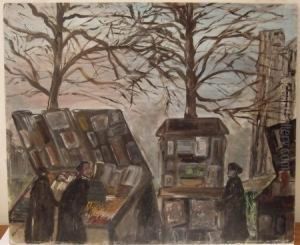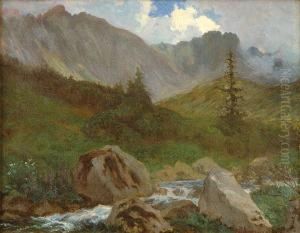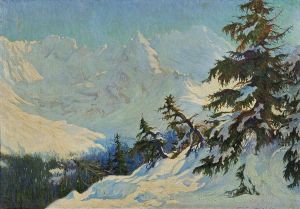Wladyslaw Ostrowski Paintings
Wladyslaw Ostrowski was a Polish artist, born in 1867 in Warsaw, which was then part of the Russian Empire due to the partitions of Poland. His early life was marked by the cultural and political oppression of Poles under Russian rule, a context that influenced the development of his artistic vision. Ostrowski was primarily known for his work as a painter, but his talents extended into the realms of graphic design and illustration.
Ostrowski's artistic education was extensive, reflecting the typical journey of a European artist at the turn of the century. He studied at the Academy of Fine Arts in Kraków, a leading art school in Poland, and furthered his education abroad. Like many artists of his time, he traveled to Paris, the epicenter of the art world, to absorb the latest trends in art and to study at the prestigious Académie Julian. This exposure to the broader European art scene was pivotal for Ostrowski, allowing him to incorporate various styles, including Realism, Impressionism, and elements of the burgeoning Art Nouveau movement, into his work.
Throughout his career, Ostrowski was deeply influenced by the Polish landscape and the nation's history. His paintings often depict scenes from rural Poland, highlighting the beauty of its countryside and the traditional way of life of its people. These works are characterized by a keen observation of natural light and atmospheric effects, rendered through a vibrant palette and dynamic brushwork. Ostrowski's landscape paintings, in particular, are celebrated for their ability to capture the ethereal qualities of the Polish countryside.
In addition to landscapes, Ostrowski was also known for his portraits and genre scenes. His portraits often captured the intellectual and cultural figures of his time, offering insight into the social fabric of Poland in the late 19th and early 20th centuries. Ostrowski's genre scenes, on the other hand, depicted everyday life with a sense of immediacy and emotional depth, reflecting the socio-economic realities of the period.
Wladyslaw Ostrowski's contribution to Polish art was significant, not only in terms of his own artistic output but also in his influence on younger generations of artists. Despite the challenges posed by the political turmoil of his times, including World War I, the interwar period, and the onset of World War II, Ostrowski remained committed to his artistic vision. He died in 1943, leaving behind a legacy that continues to be celebrated in Poland and beyond for its rich portrayal of Polish identity and landscape.
